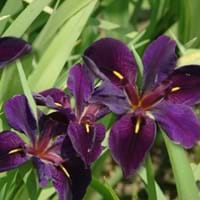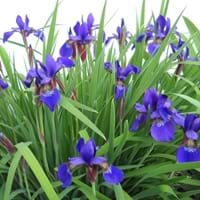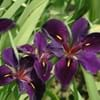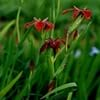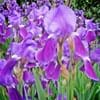Life Span
Perennial
Perennial
Type
Herbaceous Perennial
Perennial
Origin
Hybrid origin
Eastern Europe, Russia, Siberia
Types
Not Available
Not Available
Habitat
meadows, Waterside Plantings, Woodlands
Damp shady woods, Pastures
USDA Hardiness Zone
6-9
3-8
Sunset Zone
H1, H2, 3a, 3b, 4, 5, 6, 7, 8, 9, 10, 11, 12, 13, 14, 15, 16, 17, 18, 19, 20, 21, 22, 23, 24
A2, A3, 1a, 1b, 2a, 2b, 3a, 3b, 4, 5, 6, 7, 8, 9, 10, 14, 15, 16, 17, 18, 19, 20, 21, 22, 23
Habit
Clump-Forming
Clump-Forming
Flower Color
Purple, Gold, Black
White, Purple, Blue Violet
Flower Color Modifier
Bicolor
Bicolor
Fruit Color
Green
Not Available
Leaf Color in Spring
Green
Green, Dark Green
Leaf Color in Summer
Green
Green, Dark Green
Leaf Color in Fall
Green
Green, Dark Green
Leaf Color in Winter
Light Green
Light Green
Leaf Shape
Sword-like
Linear
Plant Season
Spring, Winter
Summer
Sunlight
Full Sun, Partial Sun
Full Sun, Partial Sun
Type of Soil
Clay, Loam
Clay, Loam, Sand
The pH of Soil
Acidic, Neutral
Acidic, Neutral
Soil Drainage
Average
Average
Bloom Time
Early Spring, Spring, Late Spring, Late Winter
Early Summer, Summer
Tolerances
Drought
Drought
Where to Plant?
Ground, Pot
Ground
How to Plant?
Rhizome division
Bulbs, Seedlings
Plant Maintenance
Medium
Medium
Watering Requirements
Average Water Needs
Keep ground moist
In Summer
Lots of watering
Lots of watering
In Spring
Moderate
Moderate
In Winter
Average Water
Average Water
Soil pH
Acidic, Neutral
Acidic, Neutral
Soil Type
Clay, Loam
Clay, Loam, Sand
Soil Drainage Capacity
Average
Average
Sun Exposure
Full Sun, Partial Sun
Full Sun, Partial Sun
Pruning
Remove damaged leaves, Remove dead branches, Remove dead leaves
Remove damaged leaves, Remove dead branches, Remove dead leaves
Fertilizers
All-Purpose Liquid Fertilizer
All-Purpose Liquid Fertilizer
Pests and Diseases
Disease free, Pest Free
Red blotch
Plant Tolerance
Drought
Drought
Flower Petal Number
Single
Single
Foliage Texture
Medium
Medium
Foliage Sheen
Matte
Matte
Attracts
Hummingbirds, Mammals
pollinators
Allergy
allergic reaction, Skin irritation
allergic reaction, Skin irritation
Aesthetic Uses
Bog Garden, Cut Flowers, Showy Purposes
Bog Garden, Showy Purposes, Woodland margins
Beauty Benefits
Not Available
Not Available
Environmental Uses
Air purification
Air purification
Medicinal Uses
Not Available
Expectorant
Part of Plant Used
Bulbs, Flowers
Flowers, Root
Other Uses
Not Available
Used as an insecticide
Used As Indoor Plant
No
No
Used As Outdoor Plant
Yes
Yes
Garden Design
Bog Garden, Container, Cutflower, Mixed Border, Water Gardens
Bog Garden, Cutflower, Feature Plant, Foundation, Mixed Border
Botanical Name
IRIS 'Black Gamecock'
IRIS sibirica
Common Name
Black Gamecock Iris, Black Gamecock Louisiana Iris
Siberian Iris
In Hindi
Black Gamecock Iris
Siberian Iris
In German
Black Gamecock Iris
Sibirische Schwertlilie
In French
Black Gamecock Iris
L'Iris de Sibérie
In Spanish
Black Gamecock Iris
Siberian Iris
In Greek
Black Gamecock Iris
Siberian Iris
In Portuguese
Black Gamecock Iris
Siberian Iris
In Polish
Black Gamecock Iris
Kosaciec syberyjski
In Latin
Black Gamecock Iris
Siberian Iris
Phylum
Magnoliophyta
Tracheobionta
Class
Magnoliopsida
Liliopsida
Order
Asparagales
Liliales
Family
Iridaceae
Iridaceae
Clade
Angiosperms, Monocots
Angiosperms, Monocots
Subfamily
Iridoideae
Iridoideae
Number of Species
Not Available
Not Available
Importance of Black Gamecock Iris and Siberian Iris
Want to have the most appropriate plant for your garden? You might want to know the importance of Black Gamecock Iris and Siberian Iris. Basically, these two plants vary in many aspects. Compare Black Gamecock Iris and Siberian Iris as they differ in many characteristics such as their life, care, benefits, facts, etc. Every gardener must at least have the slightest clue about the plants he wants to plant in his garden. Compare their benefits, which differ in many ways like facts and uses. The medicinal use of Black Gamecock Iris is Not Available whereas of Siberian Iris is Expectorant. Black Gamecock Iris has beauty benefits as follows: Not Available while Siberian Iris has beauty benefits as follows: Not Available.
Compare Facts of Black Gamecock Iris vs Siberian Iris
How to choose the best garden plant for your garden depending upon its facts? Here garden plant comparison will help you to solve this query. Compare the facts of Black Gamecock Iris vs Siberian Iris and know which one to choose. As garden plants have benefits and other uses, allergy is also a major drawback of plants for some people. Allergic reactions of Black Gamecock Iris are allergic reaction and Skin irritation whereas of Siberian Iris have allergic reaction and Skin irritation respectively. Having a fruit bearing plant in your garden can be a plus point of your garden. Black Gamecock Iris has no showy fruits and Siberian Iris has no showy fruits. Also Black Gamecock Iris is flowering and Siberian Iris is flowering. You can compare Black Gamecock Iris and Siberian Iris facts and facts of other plants too.
